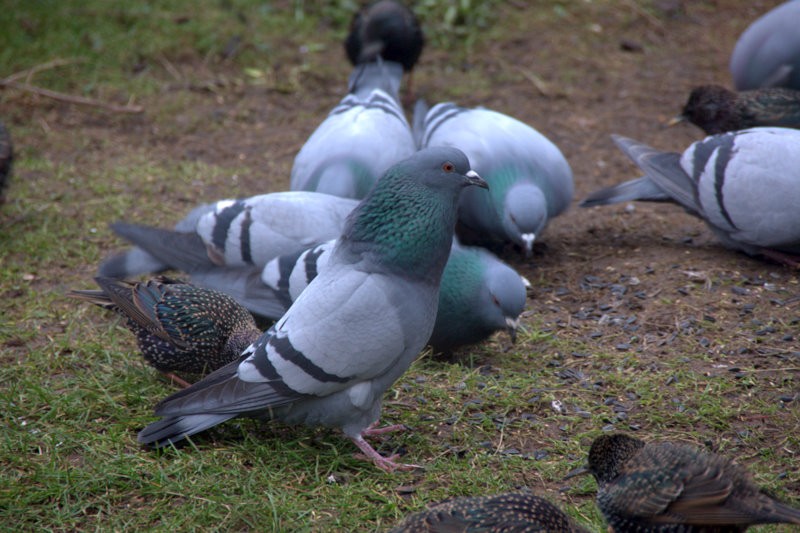Rock Pigeon
A species of Old World Pigeons, Also known as Homing Pigeon, Pigeon Scientific name : Columba livia Genus : Old World Pigeons
Rock Pigeon, A species of Old World Pigeons
Also known as:
Homing Pigeon, Pigeon
Botanical name: Columba livia
Genus: Old World Pigeons
Content
Description People often ask General Info
 Photo By Mike Pennington , used under CC-BY-SA-2.0 /Cropped and compressed from original
Photo By Mike Pennington , used under CC-BY-SA-2.0 /Cropped and compressed from original Description
The rock Pigeon is a wild ancestor of all domestic and feral pigeons, inhabiting coasts, cliffs, and caves. Pairs nest in rock crevices, often mating for life. They are known for their ability to fly very long distances to return to their homes, navigating using the sun's position and the earth's magnetic fields. Thanks to this ability, pigeons were used as messengers, particularly during World Wars I and II.
Size
33 - 36 cm
Life Expectancy
6 years
Nest Placement
Building
Clutch Size
1 - 3 eggs
Incubation Period
1 - 6 broods
Number of Broods
18 days
Nestling Period
25 - 32 days
Feeding Habits
Rock Pigeon primarily consume seeds and fruits, with occasional invertebrates. They adapt to urban environments, feeding on human-provided scraps like bread crumbs, and commonly forage for food among littered items.
Habitat
Rock Pigeon thrive in varied habitats from urban landscapes to agricultural lands and natural cliffs. They adapt to spaces offering ledges and cavities for nesting, such as city buildings, monuments, and rocky elevations. Not particular about vegetation, their habitat preference leans toward areas rich in food, water, and nesting opportunities, frequently associated with human activity.
Nest Behavior
Rock Pigeon males select sites and coo for mates. Females arrange materials provided by males. Nest build-up occurs over repeated use without feces removal, leading to sturdier nests.
Nest Characteristics
Rock Pigeon choose sites like ledges on cliffs or buildings, creating a simple platform from stems, straw, and sticks. Over time, reuse accumulates feces and debris, solidifying the structure.
Dite type
Granivorous
People often ask
General Info
Feeding Habits
Bird food type
Bird Feeder Type

Platform
Behavior
Rock Pigeon display a variety of daily activities that include foraging for food, typically seeds and grains, which they peck at from the ground. They exhibit a unique drinking behavior, dipping their bills into water and sucking it up unlike most birds. Socially, rock Pigeon communicate with a repertoire of actions such as bowing, cooing, and inflating their throats. Males perform a ritualistic courtship involving bowing, cooing, strutting, and sometimes regurgitating food to the female. Nest-building is a cooperative effort, with the male collecting materials and the female assembling the nest. Incubation of eggs and brooding of young chicks is a shared responsibility, with both parents providing nutrient-rich crop milk. All these behaviors facilitate successful reproduction and survival within their habitats.
Distribution Area
The rock dove has a restricted natural resident range in western and southern Europe, North Africa, and extending into South Asia. 
Species Status
Not globally threatened.
Scientific Classification
Phylum
Chordates Class
Birds Order
Pigeons and doves Family
Dove Genus
Old World Pigeons Species
Rock Pigeon